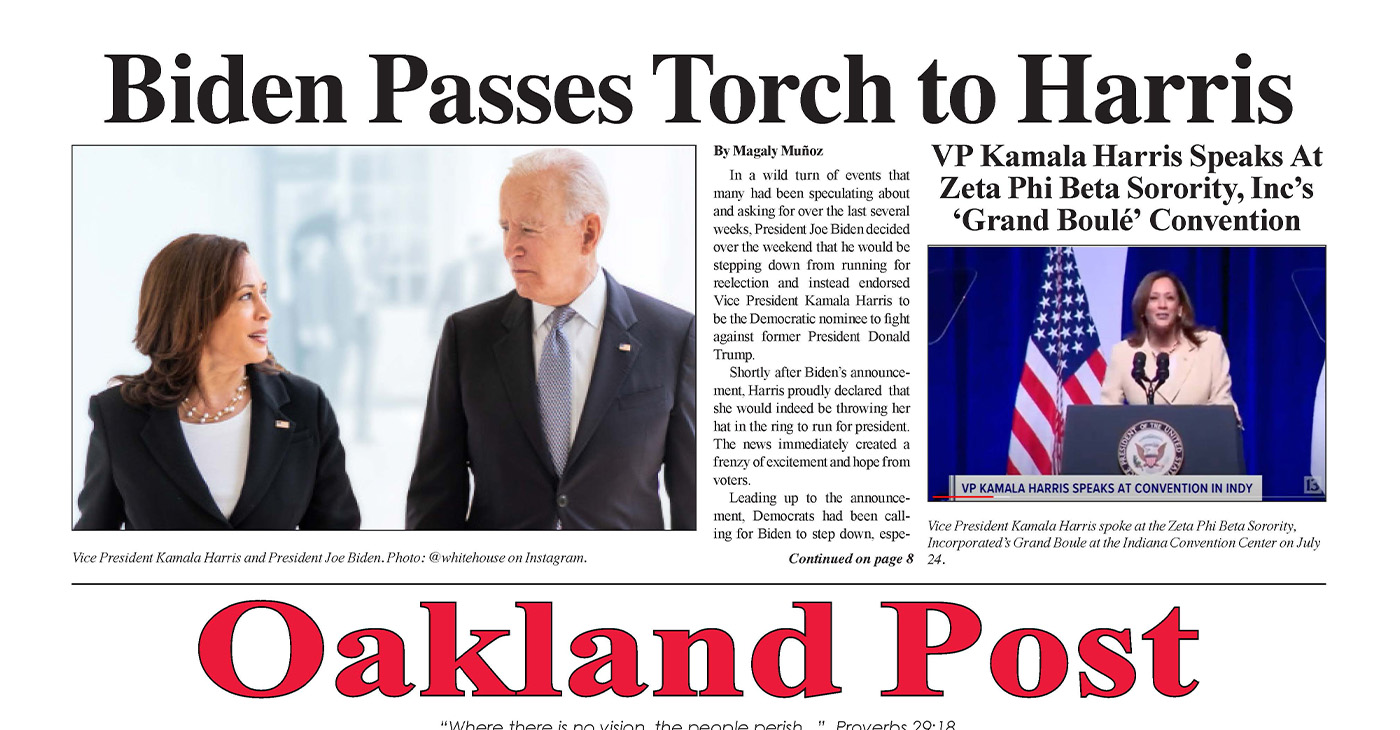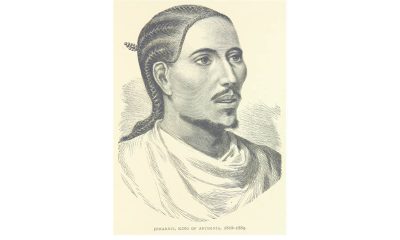City Government
California Lawmakers Want to Know Why Billions in Spending isn’t Reducing Homelessness
The state has spent billions of dollars on homelessness in recent years. So why is the crisis getting worse instead of better? That’s what a bipartisan group of California legislators is trying to get to the bottom of by calling for a first-of-its kind, large-scale audit of the state’s homelessness spending.

By Marisa Kendall
CalMatters
The state has spent billions of dollars on homelessness in recent years. So why is the crisis getting worse instead of better?
That’s what a bipartisan group of California legislators is trying to get to the bottom of by calling for a first-of-its kind, large-scale audit of the state’s homelessness spending.
The state has stepped up its involvement and investment in the crisis under Gov. Gavin Newsom’s leadership, allocating $20.6 billion toward housing and homelessness since 2018-19, according to the Legislative Analyst’s Office. But despite the influx of cash, during that time, the number of unhoused people in the state has increased by nearly a third — to more than 170,000 as of last year.
That discrepancy between what’s being spent in Sacramento and what voters see — tent cities in their neighborhoods — has many legislators clamoring for an accounting. They have instructed the state auditor to embark on a sweeping project that will analyze multiple state homelessness programs — as well as focus on homelessness spending in two cities — in an attempt to improve California’s response.
“What we’re doing is not working,” said Assemblymember Josh Hoover, a Republican from Folsom who co-authored the audit request with Democratic Sen. Dave Cortese of Santa Clara County. “And I think it’s important to get to the bottom of that and figure out where are we investing that is not getting a return on investment. And we need to stop spending money on the programs that are not working.”
The $743,400 audit, approved unanimously in the state’s legislative audit committee last month, will take about 5,000 hours of staff time and is likely to be complete by October, State Auditor Grant Parks said during the hearing. It will scrutinize the cost-effectiveness of as many as five state homelessness programs. The auditor has yet to reveal which ones, but Project Homekey — one of Newsom’s signature efforts to create homeless housing — likely will be one. And the audit will analyze spending in two California cities — San Jose and one other yet to be determined.
The analysis will focus on questions such as: How many people received services between 2020 and 2023? How much funding have San Jose and the other city received, and how has it been spent? How much of that money went toward administrative costs instead of services?
Newsom’s office wouldn’t weigh in on the pending audit, except to issue a statement: “This process is still in its early stages, and we will continue to closely monitor any future developments.”
Myles White, assistant secretary of legislation for the California Business, Consumer Services and Housing Agency, defended the state’s track record during the legislative hearing. “A lot of the progress we’ve made provides a really solid foundation for us to continue in the days ahead,” he said.
San Jose officials said they have used state funds effectively and efficiently, and have been transparent in their work. Local officials rallied at the state Capitol last week, demanding that the state give them an ongoing $3 billion a year to address homelessness.
Cortese began pushing for the audit after touring a massive homeless encampment on vacant land near San Jose’s airport. One of the largest in California, the camp was home to more than 400 people during the pandemic. What he saw shocked and appalled him: “Rodents running around your feet. Massive piles of trash. Tons of broken RVs and abandoned cars. Cars turned upside down with people living inside.”
When Cortese brought up the idea of a state audit, he says local officials told him while they had spent local money, they hadn’t used state funding to improve conditions or offer services at that encampment.
“Which to me just really begged the question: ‘What’s going on?'” Cortese said.
That camp has since been cleared; the Federal Aviation Administration had threatened to withhold airport funds from the city because the camp extended into flight paths. But the city couldn’t move everyone into housing or shelter, and some people have moved to another lot just across the street.
Past attempts at accountability
Cortese’s audit isn’t the first time California’s homelessness response has come under scrutiny. Earlier this year, the Interagency Council on Homelessness found the state spent nearly $10 billion on homelessness between 2018 and 2021 and served more than 571,000 people. But despite that effort, most of those people still didn’t get a roof over their heads.
And in 2021, a state audit of five local governments found that they did not always comply with federal regulations or follow best practices when responding to homelessness.
The new audit will be an “entirely different animal,” Cortese said, as it will go deeper into the state’s spending. Legislators hope it also will make specific recommendations as to how ineffective programs could be improved or even cut — something the Interagency Council’s report didn’t do.
The heightened scrutiny comes as Newsom has both ramped up spending and rolled out a series of new homelessness programs since the COVID-19 pandemic began. Those include Project Roomkey, which temporarily put elderly and medically compromised unhoused people up in hotels; Homekey, which gives cities and counties money to turn some of those hotels (and other buildings) into longer-term homeless housing; and the Encampment Resolution Grant program, which gives cities and counties money to clear homeless encampments and move occupants into housing and shelters.
It’s no surprise that Republicans would continue their critique of the liberal governor’s spending. But the recent involvement of Cortese and other Democrats signals the politics have shifted.
For example, Assemblymember Luz Rivas, a Democrat from the San Fernando Valley, is pushing her own accountability bill. Assembly Bill 799 would force the state to set specific goals for reducing homelessness, while also allowing funding to be reallocated away from local agencies that fail to meet their goals.
“We get asked by our constituents,” she said. “They ask ‘Where is this funding going to? Is it really being used effectively?'”
Even Newsom himself has advocated for more accountability. He recently began requiring that cities and counties submit “homeless action plans” before receiving state funding, and he briefly held $1 billion hostage after determining the plans they drafted weren’t ambitious enough.
During last month’s hearing, several legislators advocated for the auditor to choose cities in their own districts. Some made pitches for Los Angeles and Sacramento, while others pushed for smaller cities.
Gail Osmer, a San Jose advocate who led Cortese on the encampment tour that inspired the audit, spoke alongside the senator at the hearing. In an interview, she said she hopes the audit’s findings will be a wake-up call for her city.
Osmer has been critical of how the city cleared the airport encampment. Camp residents were promised services, such as free repairs for their cars and RVs, that many people never received, she said.
“People are not held accountable,” Osmer said. “Where’s the money going?”
Activism
Oakland Post: Week of July 24 – 30, 2024
The printed Weekly Edition of the Oakland Post: Week of July 24 – 30, 2024

To enlarge your view of this issue, use the slider, magnifying glass icon or full page icon in the lower right corner of the browser window. ![]()
Activism
Oakland Post: Week of July 17 -23, 2024
The printed Weekly Edition of the Oakland Post: Week of July 17 -23, 2024

To enlarge your view of this issue, use the slider, magnifying glass icon or full page icon in the lower right corner of the browser window. ![]()
Antonio Ray Harvey
Lawmakers Incensed by ‘Watering Down’ of Language in Child Sex Solicitation Bill
After an emotional hearing on July 2, the Assembly Public Safety Committee voted to advance Senate Bill (SB) 1414 with an 8-0 vote. The legislation is an anti-sex-trafficking measure designed to increase penalties for those who purchase sex from children, SB 1414, co- authored by Senators Shannon Grove (R-Bakersfield), Anna Caballero (D-Merced) and Senator Susan Rubio (D-Baldwin Park), will be reviewed by the Assembly Appropriations Committee after the Legislature break ends on Aug. 5.

By Antonio Ray Harvey
California Black Media
After an emotional hearing on July 2, the Assembly Public Safety Committee voted to advance Senate Bill (SB) 1414 with an 8-0 vote. The legislation is an anti-sex-trafficking measure designed to increase penalties for those who purchase sex from children,
SB 1414, co- authored by Senators Shannon Grove (R-Bakersfield), Anna Caballero (D-Merced) and Senator Susan Rubio (D-Baldwin Park), will be reviewed by the Assembly Appropriations Committee after the Legislature break ends on Aug. 5.
The legislation has received bipartisan support. However, “critical amendments” were removed, Grove said. She is not satisfied with the language currently in the bill and is pressing members of the Assembly Public Safety Committee to allow key provisions to be restored.
“I am disappointed that they didn’t accept the amendments for all minors to be protected under felony convictions,” Grove said after the committee’s vote.
“I am not going to give up fighting for those 16- and 17-year-olds – and all minors,” Grove stated. “Now, the district attorneys would have to prove two crimes: that they were bought and sold in order to go back to the perpetrator (trafficker) who initiated the whole process.”
SB 1414 made it off the Senate floor with a 36-0 bipartisan vote on May 23. Before the floor vote in the Senate, the Senate Public Safety Committee amended SB 1414, weakening protections for children ages 16 and 17, Grove said.
The committee’s amendments included charging violators who purchase children 15 and under for sex as ‘wobblers’ (crimes that can be punished as a felony or misdemeanor). According to the current language of the bill, solicitation of a 16- and 17-year-old child is only punishable as a misdemeanor. The second amendment to the bill calls for the felony charge to only carry possible jail time — not time in prison.
Grove and her supporters’ other concern is that a third amendment to SB 1414 states that only perpetrators with a previous conviction of buying sex from a child 15 or under, on the second offense and with over a 10-year age gap of the victim, must register as a Tier 1 sex offender.
Dr. Stephany Powell, a retired Los Angeles Police Department sergeant who has over 30 years of sexual exploitation and trafficking experience gained through law enforcement, testified in front of the Assembly Public Safety Committee.
“First of all, there’s no way in the world that (these amendments) are protecting a 16- or 17-year-old,” said Powell, who now assists victims of human trafficking. “Just by the age alone, they are considered to be a victim of human trafficking. That’s your proof right there.”
Assemblymember Kevin McCarty (D-Sacramento), chair of the Public Safety Committee and a member of the California Legislative Black Caucus (CLBC), told Grove that he supports SB 1414 and commended her efforts to bring “more accountability to the sex trade.”
McCarty said he is willing to make SB 1414 “stronger,” but he is not willing to allow Grove to buck the rules of the Legislature to push her amendments through.
“That’s not on the table. As the rules, you know, we can’t go change that,” McCarty said of Grove’s amendments request.
On June 2, Anne Irwin, the founder and director of Smart Justice California, emailed California Black Media (CBM) a statement responding to SB 1414. Smart Justice sides with the amendments made by the Democrats in the Senate and the Assembly.
“With the recently adopted amendments, SB 1414 now represents a smart policy solution that prioritizes the safety and well-being of all minors,” Irwin stated. “By allowing felony prosecutions for solicitation of 16- and 17-year-olds when there is evidence of human trafficking, lawmakers have further improved the bill – which was originally overly broad and would have had harmful unintended consequences.”
-

 Arts and Culture3 weeks ago
Arts and Culture3 weeks agoRooted in Tradition: The Intricate History of Black Hair Braiding
-

 Bay Area4 weeks ago
Bay Area4 weeks ago“I Will Not Be Bullied,” Says Oakland Mayor Sheng Thao
-

 Bay Area2 weeks ago
Bay Area2 weeks agoPG&E Increases Rates While Bay Area Households Are Struggling to Stay Afloat
-

 Business3 weeks ago
Business3 weeks agoGov Newsom: Raising Fast Food Minimum Wage to $20 Pays Off as Jobs Multiply in Industry
-

 Activism4 weeks ago
Activism4 weeks agoOpponents of Mayor Sheng Thao Are Calling on Her to Resign Following FBI Raid
-

 Community1 week ago
Community1 week agoHundreds Come to Jehovah’s Witnesses’ Assembly Hall for Three-Day Program of ‘Good News’ in Fremont
-

 Bay Area2 weeks ago
Bay Area2 weeks agoJuneteenth Mass Shooting Suspect Charge with Multiple Counts of Felony Assault by Alameda County DA Pamela Price
-

 Activism4 weeks ago
Activism4 weeks agoOakland Coliseum Sale to AASEG: A Model for Community Development and Inclusion



















































